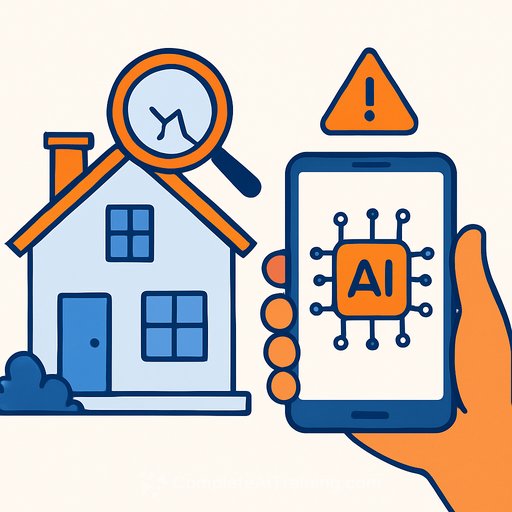Is AI unfairly denying insurance claims in Florida?
AI is now embedded in claims operations across Florida. It routes FNOLs, prioritizes inspections, flags fraud, and suggests settlement ranges. Speed improves. Costs drop. But there's a growing concern: are automated decisions quietly pushing valid claims into denial buckets, especially after major storms?
Florida's pressure is unique. Premiums are high, litigation has been heavy, and catastrophe losses swing results. In 2024, the state's average homeowner claim denial rate reportedly hit 46.7%, with Hurricane Milton driving an estimated $4.7B in insured losses and more than 92,000 denied claims for various reasons. Whether AI is a main driver or a minor one, the perception problem is real-and perception is a compliance and reputation risk.
What stakeholders are saying
Industry voices argue the tech helps. "These applications increase efficiency, improve accuracy, and lead to faster resolution for policyholders," said Mark Friedlander of the Insurance Information Institute.
The state's consumer advocates see a transparency gap. Sean Fisher of Florida's Department of Financial Services noted that many consumers don't realize AI may be used to underwrite, deny, or set the offer amount.
Lawmakers are now asking for guardrails. State Rep. Hilary Cassel raised the core question: what law prevents AI from being the sole basis for a denial? She's pushing for a requirement that a human reviews any denial decision.
What's likely happening inside carrier workflows
- AI-driven triage: score severity, route adjusters, prioritize vulnerable claims.
- Damage estimation: computer vision on aerial/ground photos, material pricing curves, depreciation.
- Fraud/claim quality scoring: pattern detection for inconsistencies, contractor anomalies, or duplicate losses.
- Settlement recommendations: suggested ranges based on historical outcomes.
These are useful, especially at CAT scale. The risk is over-indexing on model outputs that don't see local context-like unmodeled tornado damage, code upgrades, or temporary labor surges that break standard pricing.
Where unfair denials can creep in
- Data drift after CAT events: pre-storm training data underestimates post-storm realities, producing lowball estimates.
- Imperfect imagery: tree cover, tarps, and angles cause misreads of roof and siding damage.
- One-size-fits-all thresholds: rigid scores driving denials or low offers without room for nuance.
- Third-party vendor opacity: black-box models with limited explainability and unclear validation in Florida-specific peril profiles.
Regulatory posture to track
Florida officials are scrutinizing how AI is used in claims, especially for denials and settlement amounts. Proposals on the table include requiring human review before any denial and clearer disclosures when automation materially influences an outcome.
For reference, see the Florida Office of Insurance Regulation and the Department of Financial Services for emerging guidance and consumer expectations: Florida OIR and Florida DFS Consumer Services.
Action guide for insurance professionals
1) Put a human at the point of denial
- Require human sign-off for any denial or partial denial influenced by AI outputs.
- Document the rationale in plain language, including the evidence reviewed beyond model scores.
- Give adjusters authority to override automated estimates with field facts and photos.
2) Build a simple AI use notice
- Tell policyholders-briefly-if automation influenced an estimate or decision.
- Explain how to request a human review and what additional documentation helps.
3) Raise the bar on vendor governance
- Demand model cards or equivalent: training data scope, intended use, known limitations, and Florida validation results.
- Run quarterly fairness and accuracy tests by peril, construction type, and ZIP-level segments.
- Contract for transparency: access to feature importance, error rates, and versioning history.
4) Calibrate for CAT conditions
- Stand up CAT-mode pricing exceptions for labor/material spikes and code upgrades.
- Require on-the-ground verification for computer-vision "no damage" calls in tornado or wind zones.
- Throttle automation during the first weeks post-event when data is noisiest.
5) Tighten documentation and audit trails
- Log which models were used, their version, input evidence, and final human decision.
- Store before/after photos, contractor bids, code references, and all variance notes from the AI suggestion.
- Audit a random sample of denials and low settlements monthly; publish findings to claims leadership.
6) Monitor the right KPIs
- False negative rate: % of initially denied claims later paid after appeal or litigation.
- Variance to human estimate: by peril and region, especially after CATs.
- Appeal rate and cycle time: track spikes by carrier, vendor model, or adjuster team.
- Complaint and DOI inquiry counts tied to automated steps.
7) Train your teams (and your models)
- Upskill adjusters and supervisors on reading model outputs, spotting bad inputs, and knowing when to override.
- Retrain models with Florida-specific events and recent CAT data; retire features that create hidden proxies for sensitive attributes.
What this means for policyholders-and for you
Consumers don't care if a denial came from a model or a person. They care if it's fair, fast, and explained. The easiest way to reduce friction: communicate early, offer a human review path, and back decisions with evidence they can see.
For carriers and TPAs, the risk isn't AI itself-it's unmanaged automation. Put guardrails in, keep the human accountable, and prove your process can handle the messiness of real losses after Florida storms.
Bottom line
AI can speed claims, but it should never be the final word on a denial. Human review, clear documentation, and strong vendor oversight will keep you efficient without sacrificing fairness-or inviting regulatory trouble.
If your team needs practical AI literacy for claims, underwriting, and compliance, explore focused programs here: Complete AI Training - Courses by Job.
Your membership also unlocks:






